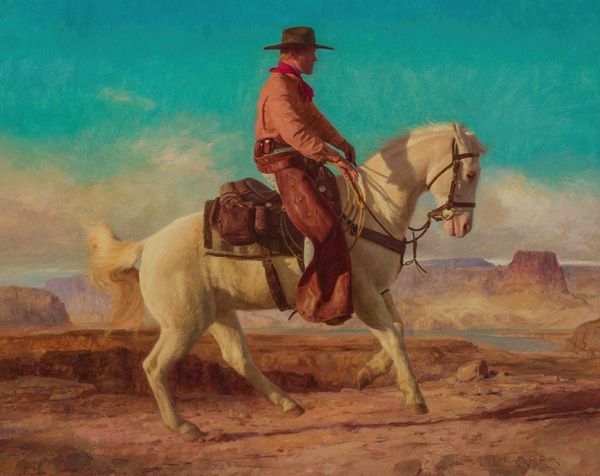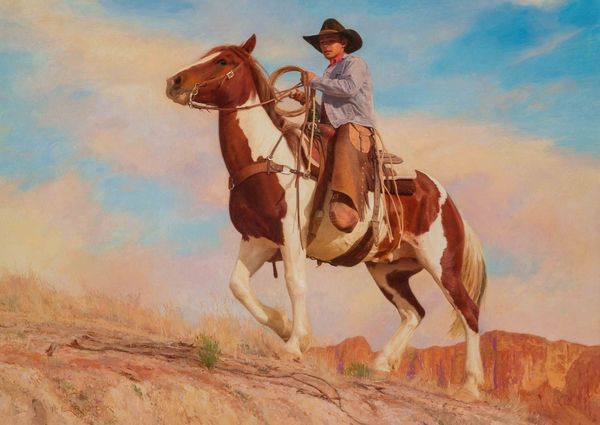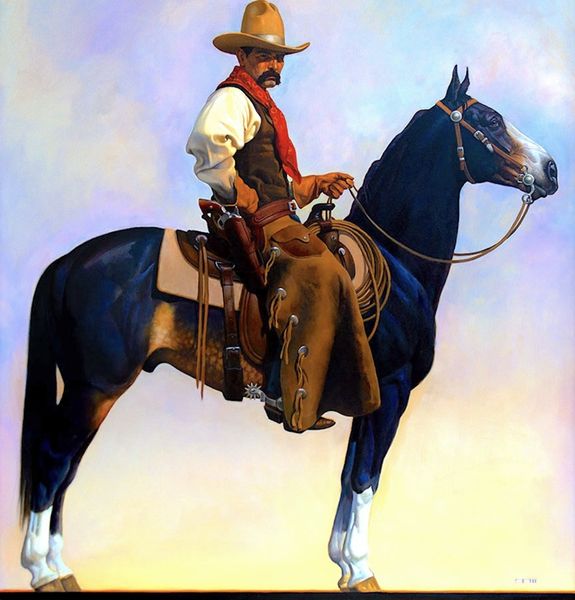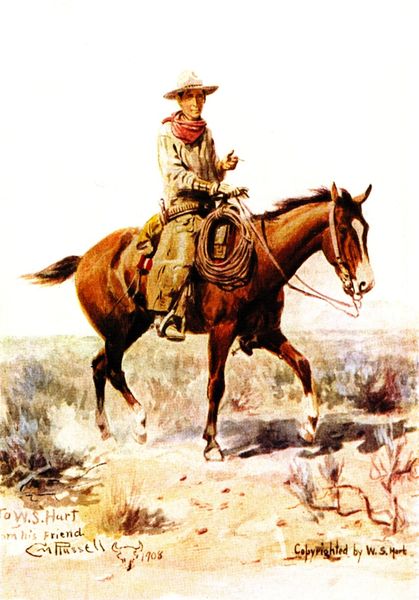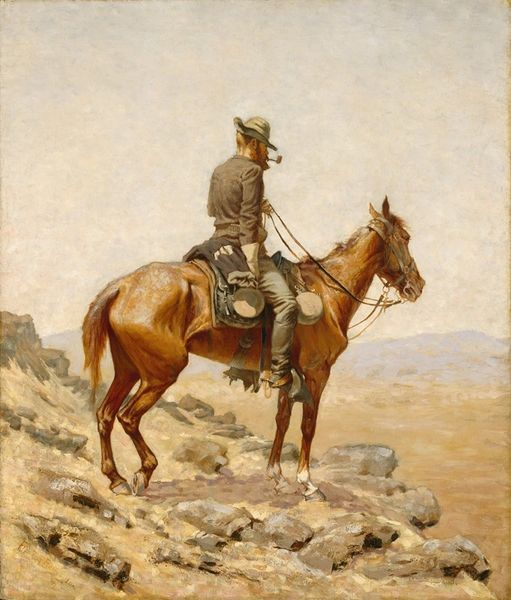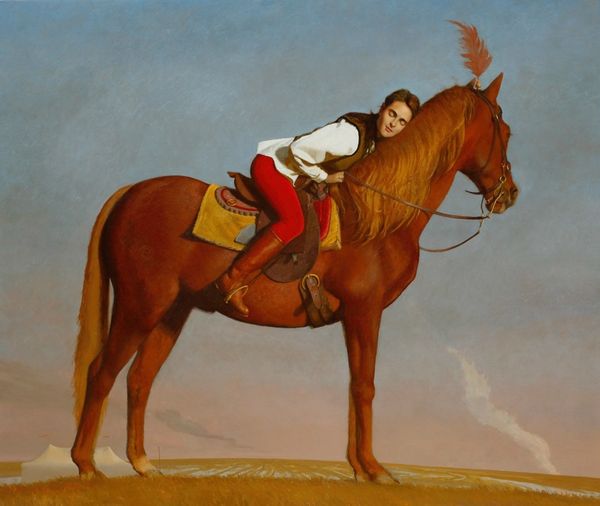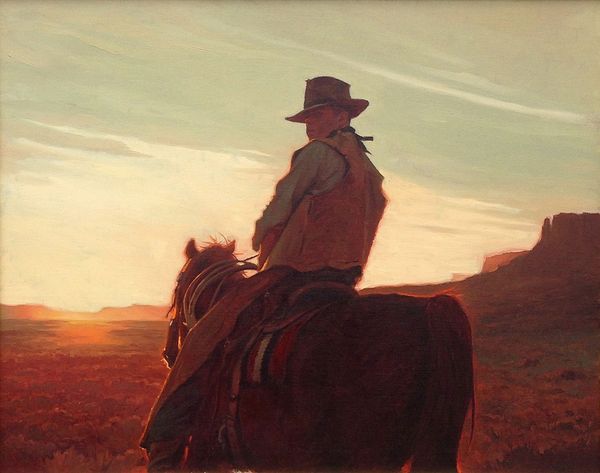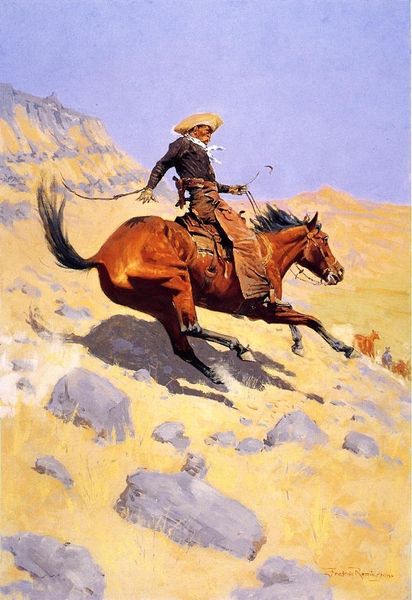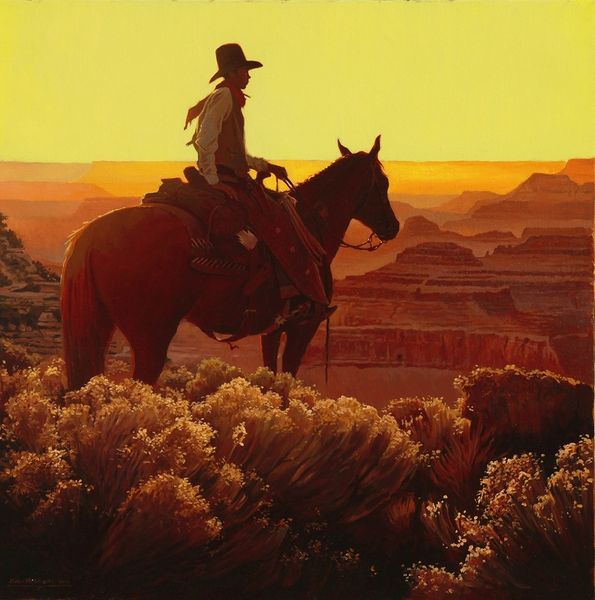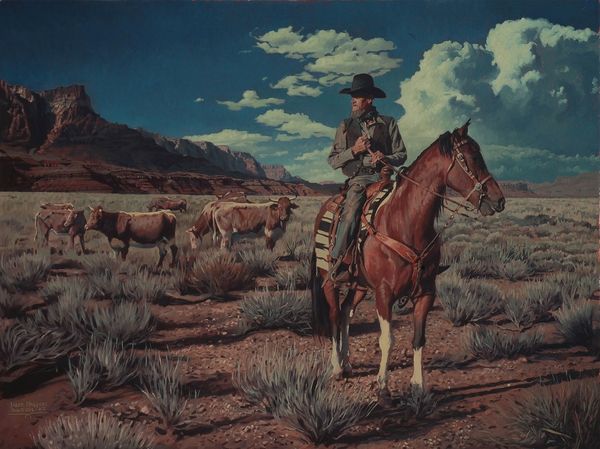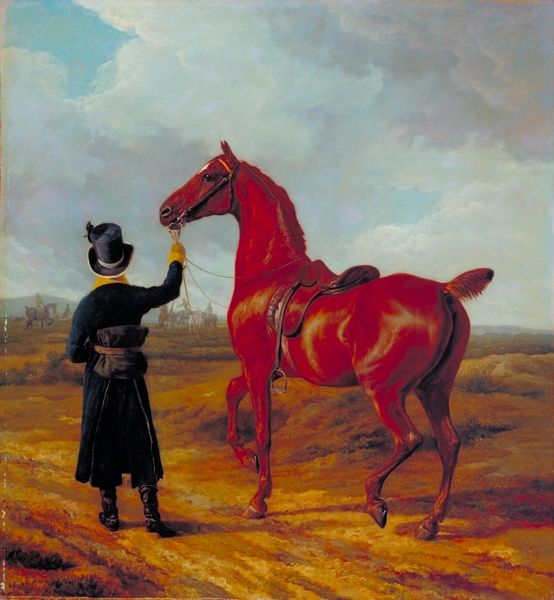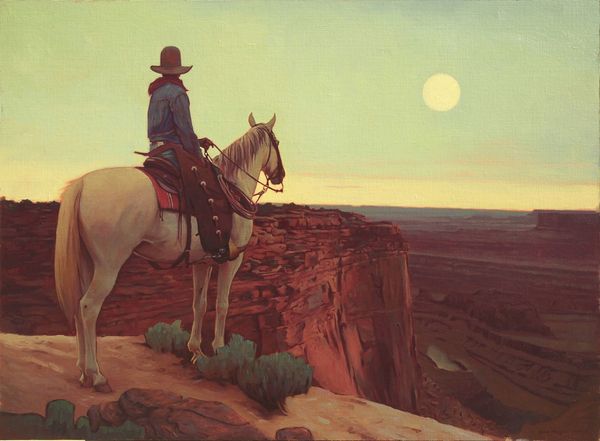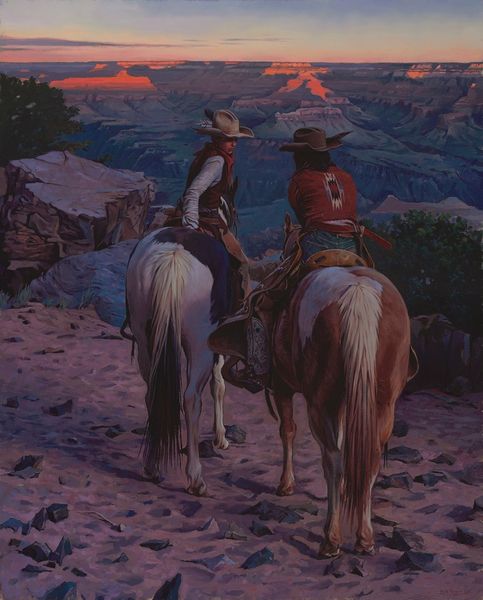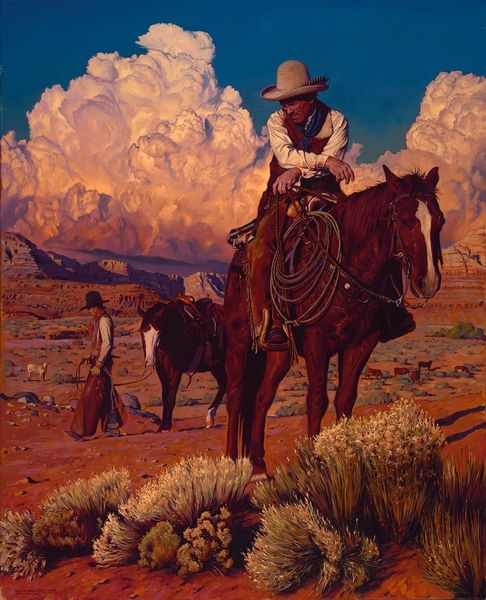
painting, plein-air, oil-paint
#
portrait
#
figurative
#
painting
#
plein-air
#
oil-paint
#
landscape
#
oil painting
#
underpainting
#
animal portrait
#
painting painterly
#
genre-painting
#
realism
Copyright: Modern Artists: Artvee
Editor: This is Joshua LaRock’s "Headwinds," an oil painting. There isn't a date provided, which is a bit frustrating. I'm immediately drawn to the realistic depiction and the almost cinematic quality of the lone rider. What do you see in this piece, particularly from a socio-historical perspective? Curator: "Headwinds" presents an interesting intersection of classic Western iconography and contemporary artistic practice. LaRock engages with the myth of the cowboy, a figure deeply embedded in the narratives of American identity and expansionism. But what does it mean to revive this imagery today, especially given our increased awareness of the violence and displacement upon which the West was built? Editor: That’s a very different angle than I was expecting. So you're suggesting the painting asks us to confront the complexities and maybe even the darker sides of the romanticized 'Wild West'? Curator: Exactly. Consider the underrepresentation and marginalization of Native communities within these very landscapes. How can we critically re-evaluate this representation? What is missing from the story that we can explore through the artwork’s theme? Editor: It is hard not to see this painting through modern perspectives... How does the artist’s choice to paint in the "plein-air" style inform these considerations? Curator: Painting "en plein air" suggests a direct encounter with the land. Here, I see a way for the artist to reconcile historical imagination and lived experience, and even engage the contemporary experience of living in a place that has that specific legacy. Can we separate that experience, that feeling of place, from the historical burdens you are hinting at? I want us to reflect on the historical layers present within that landscape. Editor: I see what you mean. Thinking about the painting as part of a larger narrative about the land changes the way I look at the subject itself. Curator: Precisely. It is crucial to engage with art not just for its aesthetic qualities but also for its potential to provoke conversations about power, history, and representation.
Comments
No comments
Be the first to comment and join the conversation on the ultimate creative platform.
